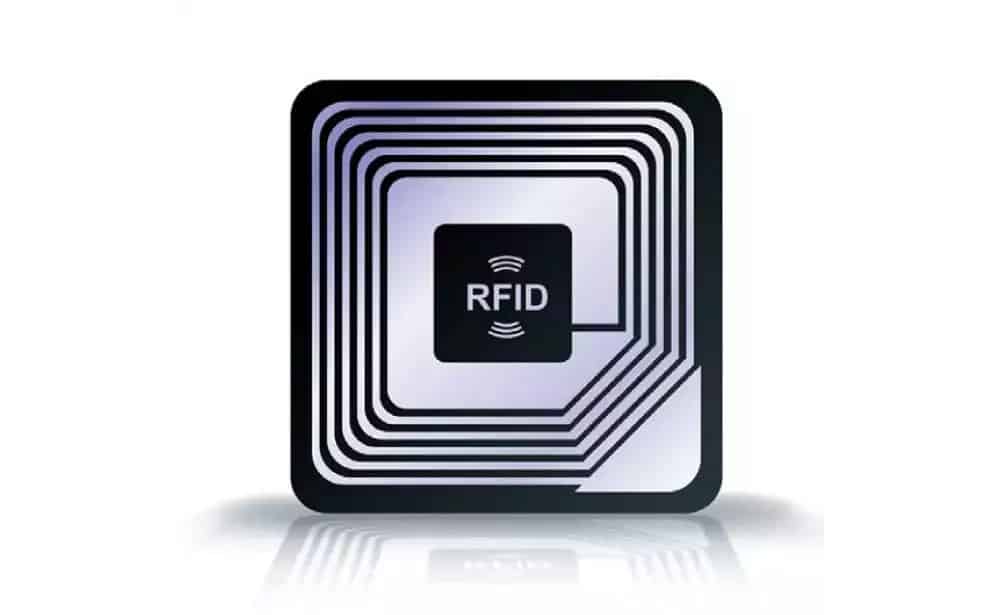RFID, or Radio Frequency Identification, is a technology that uses radio waves to read and capture information stored on a tag attached to an object.
The tag can be either active or passive.
Active tags have a battery and emit a signal that can be detected by a receiver.
Passive tags do not have a battery and instead rely on the power of the reader’s signal to transmit data. RFID tags are used in many industries today, including retail, manufacturing, transportation, and healthcare.
What is RFID?
RFID is an acronym for “radio-frequency identification” and refers to a technology whereby digital data encoded in RFID tags or transponders is captured by a reader via radio waves.
RFID is similar to barcoding in that it provides a way to digitally store and retrieve information.
However, unlike barcodes, which can only be read one at a time by a scanner, RFID tags can be read simultaneously by multiple readers. This allows for much faster data capture and processing.
RFID tags are used in a variety of applications, such as tracking inventory or assets, monitoring livestock, and identifying people or animals. The technology is also being used increasingly in access control and security systems.
How Does RFID Work?
RFID tags contain a small microchip that stores information about the item to which it is attached.
The tag is activated by a radio frequency (RF) scanner, which reads the information stored on the chip.
Applications of RFID
There are many potential applications for RFID technology.
For instance, RFID tags could be used to track inventory in a warehouse or store.
RFID tags could also be used to monitor the movements of livestock or wildlife.
In addition, RFID technology could be used to keep track of vehicles or other assets.
Finally, RFID tags could be used to track the location of people or objects.
RFID chips are now being used in passports, credit cards, and transport passes to allow fast scanning and contactless payments.
How is RFID Powered?
RFID tags are powered in one of three ways:
- Passive RFID tags draw power from the electromagnetic field emitted by the reader.
- Active RFID tags have a power source, such as a battery, which powers the tag when it is energized by the reader.
- Semi-passive RFID tags have a power source, but only use it when transmitting data back to the reader.
All three types of RFID tags are used in various applications today. Passive and semi-passive tags are less expensive to manufacture than active tags, making them more popular choices for many businesses.
However, active tags tend to have a longer read range and can be read more quickly than passive tags, making them a better choice for applications where tag reads need to be performed quickly and/or from a distance.
What are the Benefits of RFID?
RFID technology offers many benefits over traditional barcoding systems.
- RFID tags can store more information than barcodes, so they can be used to track not only product information but also location and history.
- RFID tags do not need to be within the line of sight of the reader, so they can be read even if they are hidden or covered.
- RFID tags can be read simultaneously from multiple readers, making data collection more efficient.
- RFID tags are more durable than barcodes, so they can withstand harsh conditions and last longer.
These benefits make RFID a good choice for applications where barcodes cannot be used or where more information needs to be tracked than what a barcode can provide.
However, RFID technology is also more expensive than barcoding, so it is important to weigh the benefits and costs before deciding which technology to use.
What are the Downsides of RFID?
Like any technology, RFID has its limitations.
- One downside of RFID is that it can be difficult to track individual items because each tag contains the same information.
- Another downside of RFID is that the tags can be read by anyone with an RFID reader, so confidential information stored on the tags may be at risk.
- Finally, RFID technology is still relatively new, so it is constantly evolving and changing. This can make it difficult to keep up with the latest developments and ensure that RFID systems are compatible with each other.
Despite these downsides, RFID offers many benefits that make it a good choice for many applications.
With the right safeguards in place, businesses can take advantage of RFID technology to improve their operations and better serve their customers.
RFID chips are sometimes used in passports, credit cards, and transport passes to allow fast scanning and contactless payments.
These chips emit radio signals that anyone with a reader can potentially try to intercept making this is a risk for criminality.
Who Invented RFID?
Inventor Harry Stockman is credited with first proposing the use of radio waves to identify and track objects in 1948.
However, it was not until the 1970s that RFID technology began to be developed for commercial use.
In 1973, an engineer named Charles Walton was issued a patent for an electronic article surveillance device, which was the first RFID system used for security purposes.
In 1983, Walter Stocklin and Stephen Saylor received a patent for an RFID tag that could be read from a distance.
This was the first RFID tag that could be read without being in the line of sight of the reader, making it more practical for use in tracking inventory and other objects.
While the origins of RFID technology date back several decades, it is only in recent years that RFID has become widely used in a variety of applications.
How Far Can RFID Be Tracked?
Theoretically, RFID signals can be tracked as far away as the reader has a line of sight to the tag.
In practice, however, most RFID systems have a much shorter range.
The distance at which an RFID tag can be read depends on several factors, including:
- The type of tag (passive or active)
- The frequency of the signal (low or high)
- Whether the tag is powered by an external source
- The reader’s power output
- Interference from other RFID tags or electronic devices
In general, passive low-frequency tags have a shorter range than active high-frequency tags.
However, there are exceptions to this rule.
For example, some high-frequency tags reflect their signals to increase their range, while other low-frequency tags use special antennas that can boost their signal strength.



